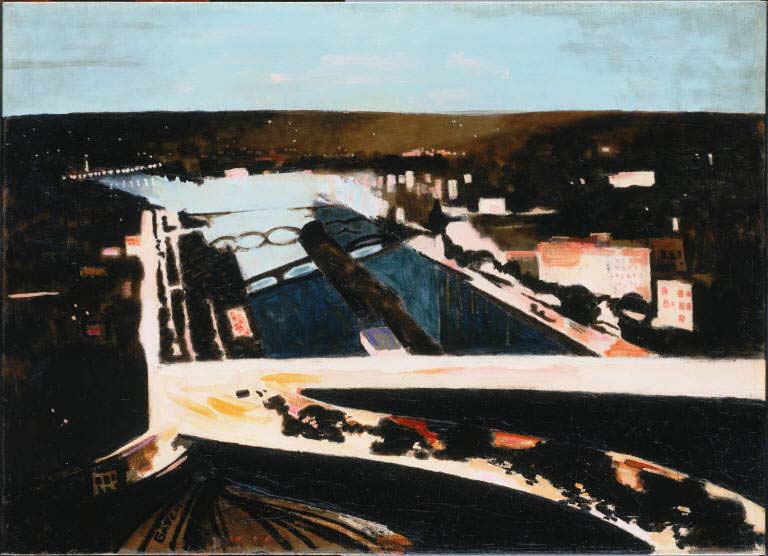
Lee Gatch, City at Evening, 1933. Oil on canvas, 18 x 25 in. The Phillips Collection, Washington, D.C. Acquired in 1943.
Talented vocalists and other musicians from Wolf Trap return to The Phillips Collection this Thursday at 6:30 pm for the second concert in the Vocal Colors: A Musical Exploration of Visual Art series. Pianist Stephanie Rhodes guest blogs about her experience interpreting artwork through music.
I see in black and white, but I hear color. As a pianist, I have 88 keys and printed black notation staring off a glaring white page. My job (how did I get so lucky?) is to take that straightforward world and transform it into a colorful realm of sound, all with the aim of sweeping up the listener in the process of creation, typically with the help of a talented singer.
Here’s the thing: aural orientation doesn’t really lend itself to visual art. I’ve spent time in some of the greatest art museums in the world, with an audio tour guide in tow and a strong desire to experience the masterpieces before me. Often though, the type of connection and impression I so value in my musical being eludes me.
Preparing our Vocal Colors recital for The Phillips Collection, that has not been the case. It’s meant looking at a work of art, carefully identifying the emotional response it evokes, and associating that in turn with music. Classical, jazz, pop . . . anything goes. It’s been fascinating filtering through the singers’ selections, reexamining the art through their eyes, and ultimately reinterpreting the music as well. The Vocal Colors recital is truly what I consider an experience.
Maybe you don’t hear Simon and Garfunkel when you see Lee Gatch’s City at Evening or a jazz ballad with Milton Avery’s Girl Writing. But with musical interpretations of the masterpieces in The Phillips Collection, you’re bound to see, hear, and ultimately experience art with a new perspective. I know I have.
Check out Vocal Colors Part I, on June 16, for a taste of what’s to come:
–Stephanie Rhodes, Wolf Trap pianist
